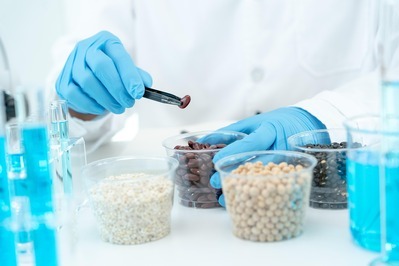R&D (Shelf Life)

Application Packaging For Increasing Shelf Life
In today’s world, food packaging is both necessary and prevalent. It is necessary because packaging ensures the safety and quality of food; it is prevalent because nearly every food item is packaged in some form. The primary function of packaging is to safeguard food from external environmental factors such as water, moisture, gases, odors, microorganisms, dust, impact, vibration, and compressive forces. A variety of materials are utilised for food packaging, including metals, glass, plastics, and paper, each offering a wide range of functional properties.
In vacuum packaging and modified atmosphere packaging (MAP) for fresh meat, sausages, poultry, dairy products, and baked goods, plastics are employed in various grades and with different film layers to enhance preservation. The oxygen barrier properties of the packaging material are a crucial criterion in selecting the appropriate material for specific food items. Foods are often categorized based on the level of protection they require, such as maximum moisture or oxygen absorption. Calculations can then be performed to determine if a particular packaging material provides the necessary barrier for the desired shelf life of the product. Modified atmosphere packaging (MAP) is an effective method for storing perishable foods under cold conditions without resorting to heat treatment or chemical preservatives. The preservative effect of MAP primarily relies on the use of CO2 and N2 gases, which significantly inhibit or delay microbial growth.
Research and Development (R&D) refers to the systematic activities that manufacturing units engage in to innovate, launch new products and services, or enhance their existing offerings. It is a crucial element of the processes that drive technological progress and economic growth. R&D encompasses a broad spectrum of activities, ranging from fundamental scientific research to applied engineering and product development, playing a central role in shaping the future of industries and economies.
By promoting creativity, collaboration, and technological innovation, R&D empowers manufacturing units to adapt to evolving market demands and maintain their competitiveness. As industries continue to advance, the importance of R&D will only increase, positioning it as a key priority for businesses seeking long-term success and sustainability.
Key aspects of R&D in manufacturing include applied research activities that tackle challenges such as diversifying product lines, maintaining quality standards, and extending the shelf life of products. Drawing on decades of experience in industry collaboration, ICP specialists are committed to conducting joint and strategic initiatives to address existing challenges within manufacturing units across various food sectors, particularly in enhancing the shelf life of produced goods.
